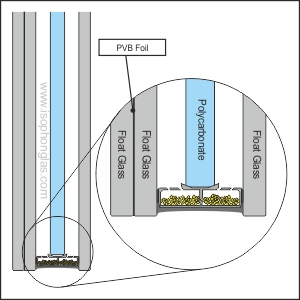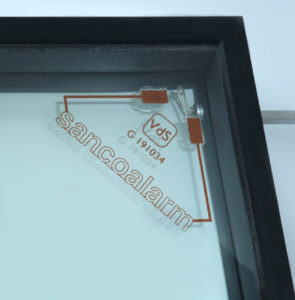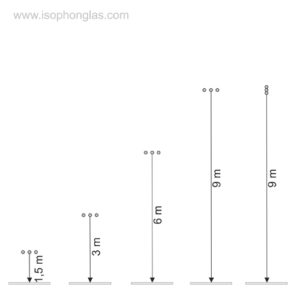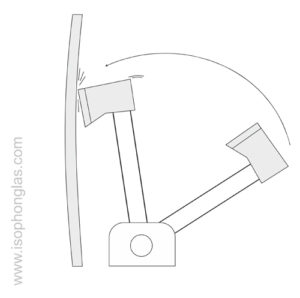INTRUSION resistance
INTRUSION resistance
Safety is our highest priority
When thinking about burglary, many people believe that windows or glass doors are the building’s weak spots. However, this does not need to be true as isophon glas manufactures all types of safety glazing for your home or business and provides perfect protection against burglars and unwanted intrusion. Additionally, we can provide glass with integrated alarm circuits that transmit an alarm signal in case of any intrusion attempts.
Which glass meets your requirements the best?
isophon manufactures all types of glass with any desired attack resistance. Safety glass is classified based on various international standards such as DIN EN 1627 and EN 356. We will be happy to discuss which glass and which safety concept will fit your needs best.
TRISOPHON PROTECT

Safety and design are two factors that do not necessarily contradict each other. trisophon is a safety glass that does not lock up the design process. It is lightweight and thin, thus being usable nearly anywhere.
Due to it possessing stunning features in terms of resistance and insulation, the patented insulation glass system trisophon protect is a multifunctional and modular IGU system.
Attack resistances up to P8B and bullet resistances up to BR7 are available, which makes trisophon the glass system with one of the highest attack protection on the market and highest classifications in terms of DIN EN 1627.
Besides, trisophon is the perfect heat insulation and has Ug-values as low as 0.3 W/m²K.
Check out more information about trisophon here !
ALARM GLASS
Alarm glass is an alternative or addition to safety glass. isophon glas offers a glass system that has an electric circuit on a tempered glass which disconnects the alarm circuit when broken, resulting in an alarm signal upon said disconnection.
The so-called alarm circuit is not visible because it is installed on the edge of the glass. However, if you want the alarm circuit to be visible, a dummy can be installed.
RESISTANCE CLASSES ACCORDING TO EN 356
The attack resistance of the glass is defined in EN 356, a standard that replaced the DIN 52290 and specifies the following categories:
A = Impact resistant glass
The testing method is based on a 4 kg ball that is dropped from a defined height. It specifies the following resistance classifications:
- P1A = falling height of 1.5 m / impact area: a triangle with an edge length of 130 mm
- P2A = falling height of 3 m / impact area: a triangle with an edge length of 130 mm
- P3A = falling height of 6 m / impact area: a triangle with an edge length of 130 mm
- P4A = falling height of 9 m / impact area: a triangle with an edge length of 130 mm
- P5A = falling height of 9 m / identical impact point is hit over and over
B = Attack resistant glass
The attack resistance according to EN 356 is tested by hitting the specimen with an axe a certain number of times. It defines the following attack resistance classifications:
- P6B = low burglar resistance, 30-50 hits with an axe
- P7B = medium burglar resistance, 51-70 hits with an axe
- P8B = high burglar resistance, over 70 hits with an axe
RESISTANCE CLASSES ACCORDING TO EN 1627
The DIN EN 1627 defines the different resistance classes (RC „resistance class“) for burglar resistant components.
Every individual resistance class tells you how long a certain product withstands intrusion attempts. A greater resistance class shows a higher break-in security. The German police for example recommends a resistance class of RC2.
Resistance classes according to DIN EN 1627
No glazings according to standards
- RC1N = no resisting time / attacker type, spontaneous attacker (vandalism and small tools)
- RC2N = 3 minutes of resisting time / attacker type, occasional attacker (simple tools)
Glazing according to DIN standards
- RC2 = 3 minutes of resisting time / attacker type, occasional attacker (common tools)
- RC3 = 5 minutes of resisting time / attacker type, experienced attacker (more tools)
- RC4 = 10 minutes of resisting time / attacker type, experienced attacker (striking tools)
- RC5 = 15 minutes of resisting time / attacker type, experienced attacker (angle grinder etc.)
- RC6 = 20 minutes of resisting time / attacker type, experienced attacker (heavy electric tools)


